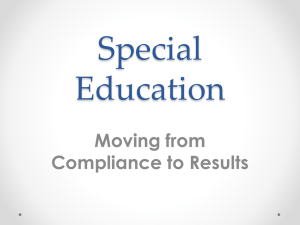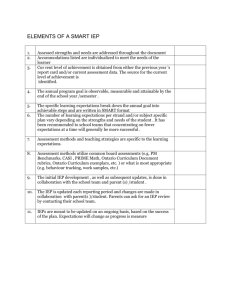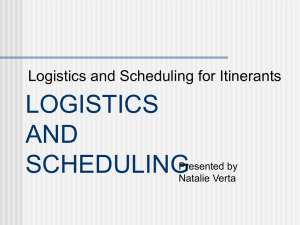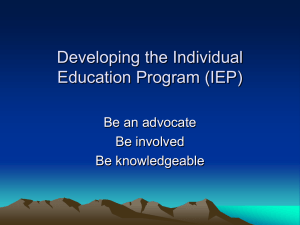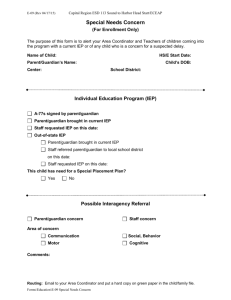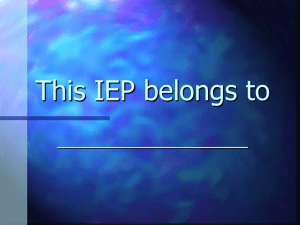Components of an IEP - National Association of Special Education
advertisement
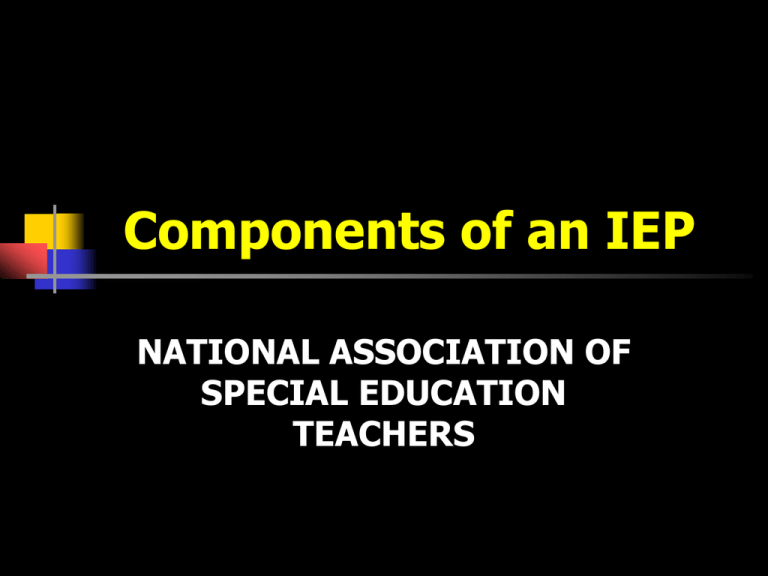
Components of an IEP NATIONAL ASSOCIATION OF SPECIAL EDUCATION TEACHERS Individualized Education Programs All students in special education must have an **individualized education program (IEP) **If a student is determined to be eligible for special education an IEP will be developed IEP All students in special education are required to have an individualized education program designed to meet their needs. The IEP includes both short-term and long-term goals, along with how and where services will be provided. **The IEP MUST be written by a TEAM Components of an IEP 1. The child’s Present levels of educational performance 2. Measurable annual goals-including benchmarks (short-term objectives) 3. An explanation of the extent, if any, to which the child will NOT participate with non-disabled children Components of an IEP 4. Related Services- Services necessary to ensure that students with disabilities benefit from their educational experience. Related services include: Speech pathology, psychological services, counseling, physical and occupational therapy, special transportation, to name a few Components of an IEP 5. The projected date of the beginning of related services, and the frequency, location, and duration of the related services 6. Any modifications in the administration of state or district wide testing Components of an IEP 7. How the child’s progress towards the annual goals will be measured and how the parents will be regularly informed of their child’s progress 8. Beginning at age 16, a statement of needed transition services Transition services- Services that assist the adolescent with a disability to successfully move from school to post-school activities




